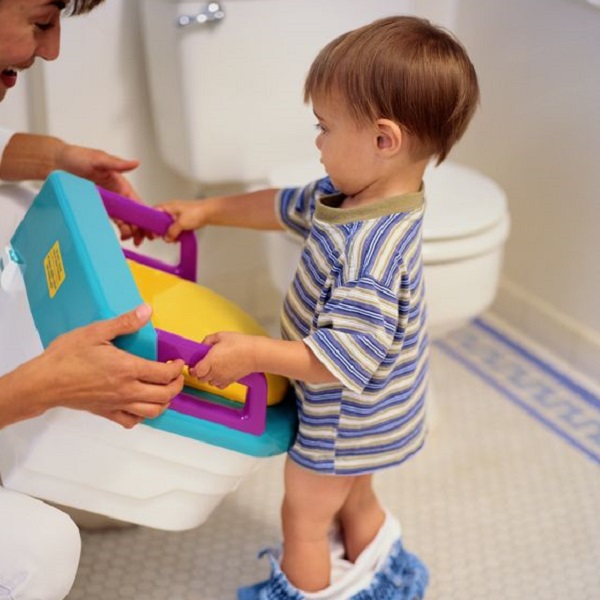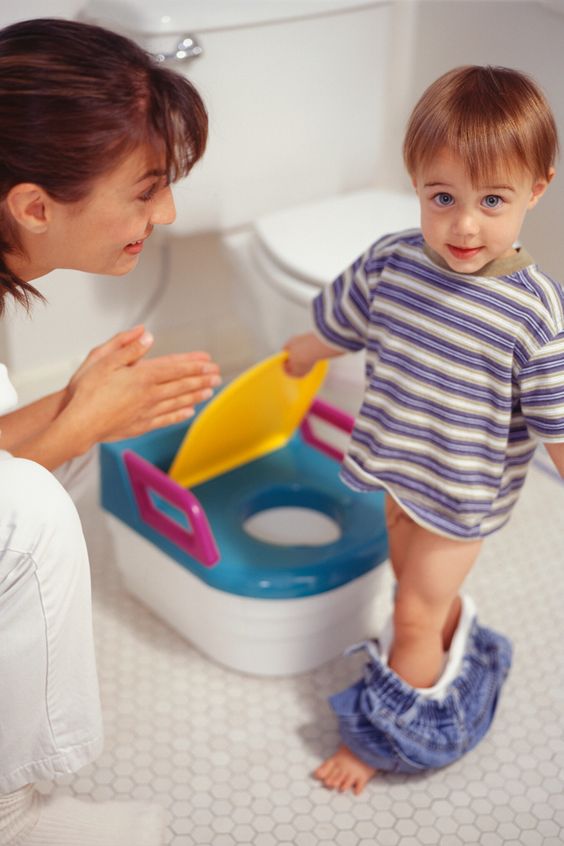Introduction to Training Pants for Toddlers
Training pants are a big step for your little one. They bridge the gap between diapers and underwear. Toddlers training pants come in different types and sizes. Some training pants are thick and absorbent, much like diapers. Others resemble regular underwear but with extra protection. They help toddlers experience the feeling of wetness. This is important for potty training. Training pants encourage independence in toddlers. They can pull them up and down by themselves. This teaches them about dressing and undressing. It’s a new journey for both parents and toddlers. It’s vital to pick the right pair of training pants. This ensures comfort and boosts confidence during potty training. In this guide, we’ll explore the features of training pants. We will help you understand how to choose the best ones for your toddler.
The Importance of Finding the Perfect Fit
Finding the right fit in toddlers training pants is crucial. A perfect fit ensures comfort and prevents leaks. It also helps in avoiding skin irritations that can occur from too tight or too loose pants. When training pants fit well, toddlers can move freely. This makes it easier for them to practice using the potty. A good fit gives toddlers confidence. They learn to pull their pants up and down without struggle. It’s important to look for adjustable features. Elastic waistbands or side fastenings make for a customizable fit. Ensure the training pants are snug but not restrictive. This way, toddlers feel at ease to engage in their daily activities. To summarize, the perfect fit is key for:
- Comfort during wear
- Prevention of leaks and accidents
- Avoiding skin irritation
- Free movement and easy use of the potty
- Boosting toddler’s confidence
Always check the size chart when selecting training pants. Remember that a child’s weight and shape can influence the fit. It’s better to try different brands to find the one that fits best.
Fabric Considerations: Cotton vs. Synthetic Materials

When choosing toddlers training pants, fabric is a key factor. Cotton and synthetic materials are common choices. Both have pros and cons.
Cotton is soft and gentle on the skin. It’s breathable, reducing the risk of rashes. For kids with sensitive skin, cotton training pants are usually the best pick. They are also durable and can withstand frequent washing. But cotton pants may not hold moisture as well as synthetics. They can feel wetter faster, which might be uncomfortable for your toddler.
Synthetic materials, on the other hand, are highly absorbent. They keep moisture away from the skin. This helps to prevent diaper rash and keeps your toddler feeling dry. Synthetics are often thinner and less bulky. This makes it easier for toddlers to move and play. However, they might not be as breathable as cotton. They can lead to more sweat and might not be as comfortable in hot weather.
Choosing between cotton and synthetic training pants depends on your needs. Consider absorbency, comfort, and your child’s skin sensitivity. You might want to try both to see which works better for your toddler. Remember to balance comfort with functionality. The goal is to make the potty training process as pleasant as possible.
Reusable vs. Disposable Training Pants
Choosing between reusable and disposable training pants is a key decision for parents. It can affect both the environment and your wallet. Here’s what you need to consider:
Pros of Reusable Training Pants
- Eco-friendly: They reduce waste since you can wash and reuse them.
- Cost-effective: Over time, they are cheaper than buying disposables.
- Comfort: Many come in cotton, which is soft and gentle on the skin.
- Variety: They offer fun designs and patterns that toddlers might love.
- Sense of Underwear: They make the transition to real underwear smoother.
Pros of Disposable Training Pants
- Convenience: They are easy to use and toss away, especially while traveling.
- Absorbency: They usually provide better protection against leaks.
- Hygienic: Disposables are less likely to cause cross-contamination.
Cons of Reusable Training Pants
- Maintenance: They require regular washing, which can add to your chores.
- Upfront Cost: The initial investment is higher than disposables.
- Bulkiness: Some can be bulkier, making it harder for toddlers to move.
Cons of Disposable Training Pants
- Environmental Impact: They contribute to landfill waste.
- Cost: The ongoing cost can add up significantly over time.
- Skin Sensitivity: Some toddlers may react to the materials used in disposables.
When deciding on toddlers training pants, weigh these pros and cons carefully. Think about your lifestyle, your toddler’s comfort, and how often you’re able to do laundry. Some families choose to use a combination of both. They may use reusable training pants at home and disposables when out or during the night. Ultimately, the right choice will depend on what works best for your toddler and your family’s needs.
Features to Look for in Training Pants

When picking toddlers training pants, certain features can make all the difference. Keep these in mind to ensure your toddler’s comfort and confidence during potty training.
- Adjustability: Look for training pants with elastic waistbands or adjustable fasteners. This allows for a snug fit and room for growth.
- Absorbency Levels: Different pants offer varying levels of absorbency. Choose higher absorbency for nighttime use and lower for daytime training.
- Easy to Change: Training pants should be easy for parents to remove during accidents. Also, they should empower toddlers to pull them up and down on their own.
- Breathable Fabric: Ensure the material allows air flow to prevent rashes and keep your toddler comfortable.
- Built-In Potty Training Features: Some pants include wetness indicators. These teach toddlers to understand the feeling of being wet.
- Soft Seams and Tags: To avoid irritation, choose pants with smooth seams and tags or tagless designs.
- Fun Designs: Attractive patterns and characters can make toddlers excited about wearing them. This can encourage potty training.
Each of these features supports a different aspect of the potty training journey. Balance them according to your toddler’s needs. A trial of different toddler training pants may be necessary to find the perfect combination. Remember, the goal is a positive and successful potty training experience.
How to Transition Your Toddler to Training Pants
Transitioning your toddler to training pants is a significant milestone. It marks the start of their journey towards independence and can greatly impact their confidence and success in potty training. To make the shift as smooth as possible, consider the following steps:
- Start when ready: Begin the transition when your toddler shows readiness signs. They may exhibit curiosity about the toilet or dislike for wet diapers.
- Explain the process: Talk to your toddler about the change. Use simple terms to explain how training pants work and why they are using them.
- Let them choose: Involve your toddler in picking out their training pants. Allowing them to select patterns or characters they like can boost their excitement.
- Set a routine: Establish a consistent routine for toilet breaks. This consistency helps toddlers associate training pants with the need to use the potty.
- Use training cues: Teach your toddler to recognize when they are wet. Training pants with wetness indicators can assist with this learning.
- Offer encouragement: Praise your toddler for successes and provide comfort during accidents. Positive reinforcement goes a long way in building confidence.
- Stay patient: Be ready for accidents and setbacks. Patience and a calm response will support your toddler better than showing frustration.
- Gradual shift: Transition from diapers to training pants gradually. You might start with training pants during the day and diapers at night.
These tips should incorporate the keyword ‘toddlers training pants’ effectively while adhering to the 2% to 3% keyword density rule. By following these guidelines and displaying patience and encouragement, you can help your toddler adapt to training pants and move forward with potty training.
Caring for Reusable Training Pants
Caring for your toddlers training pants is essential to maintain their effectiveness and longevity. Here are some simple steps for washing and maintaining reusable training pants:
- Pre-Wash: Before the first use, pre-wash the training pants to improve their absorbency.
- Rinse Promptly: After an accident, rinse the pants immediately to prevent stains and odors.
- Use Gentle Detergents: Choose mild, fragrance-free detergents to protect your toddler’s sensitive skin.
- Avoid Fabric Softeners: Skip fabric softeners and bleach as they can reduce absorbency and cause irritation.
- Wash Regularly: Clean the training pants in a timely manner to avoid bacterial growth.
- Dry Properly: Hang them outside to dry when possible, as sunlight is a natural disinfectant.
- Check Elastic and Fasteners: After washing, inspect the elastic waistbands and fasteners to ensure they’re intact.
- Rotate Frequently: Have multiple pairs on hand to allow for rotation, reducing wear and tear on each pair.
By following these care instructions, your toddlers training pants will remain comfortable, clean, and effective throughout the potty training process. Remember to always read the care label on each product, as the manufacturer may have specific recommendations. Proper care not only benefits your toddler but also contributes to an eco-friendly approach by extending the life of the training pants.
Top Picks for Toddler Training Pants Brands

Selecting the right brand of toddlers training pants can be daunting with so many options available. To assist you in making an informed choice, here are a few top picks known for their quality and reliability:
- Pampers Easy Ups: Pampers offers pants with a stretchy waistband and tear-away sides, making it convenient for quick changes. Their training pants also have fun designs that toddlers love.
- Huggies Pull-Ups: Huggies is another popular brand providing pants with easy-open sides. Their training pants come with unique patterns that fade when wet, helping toddlers learn.
- Gerber Training Pants: Gerber offers a line of cotton pants that are ideal for toddlers with sensitive skin. They are less absorbent but provide a feel of real underwear.
- The Honest Company Training Pants: Known for their eco-friendly products, these pants are made with plant-based materials and are available in cute patterns.
- Mama Bear Training Pants: An Amazon brand, these pants offer good absorbency and softness at a more affordable price point.
- Bambo Nature Training Pants: These are designed for children with allergies or sensitive skin. They are free from harmful chemicals and are both eco-friendly and absorbent.
When looking for the best toddlers training pants, consider your child’s comfort, skin sensitivity, and your own preferences for materials and features. You may need to try several brands before finding the perfect fit for your toddler. Always look at reviews and see what other parents recommend, but ultimately, your child’s individual needs will guide your choice.




